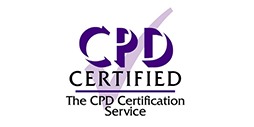Earn a Cambridge Certificate
Our Executive Education open enrolment portfolio comprises over 40 well-crafted programmes that will expand your skills and understanding in service of your organisational, personal development and career objectives.
These programmes are designed by world-class faculty for managers and leaders looking to learn and grow. Online or here in Cambridge, we offer a learning style which draws directly from the rest of the University.
Participants who attend our programmes grow in skills and confidence, returning to work with a renewed sense of purpose and direction, ready to make an impact. On completion of all our programmes, participants will be awarded a digital badge or certificate of completion by Cambridge Judge Business School Executive Education.
Your programme manager will send you an email with a certificate download link, once you have attended the programme. The certificates are accessed via Accredible, a digital credentialing platform that enables delegates to securely issue, manage, track, and verify credentials. Built-in social sharing tools then enable you to celebrate your achievement with your network via LinkedIn, email and other social platforms. You can make your achievement discoverable on search engines, set it to private and share it only with selected people in your network or embed on your website.
You can place your credential’s unique URL in a large variety of places, including:
- social media profiles
- websites and blogs
- digital resumes
- email signatures
By doing this you can direct stakeholders such as admissions officers, potential employers, or customers back to your Credential View. By directing people who are interested in your credential back to the Credential View, they can verify the validity of the credential and see more information about what that achievement entails and better understand how you gained the achievement.
Showcasing your achievement on social media
If you would like to share your certificate on your social media channels, please mention the programme you attended and tag us in so we can celebrate your success too. Our social handles:
Download a PDF of your Certificate
- Navigate to the certificate that you would like to download.
- Along the bottom of the credential window, click the ‘PDF’ button. If you can’t see the ‘PDF’ button your issuer may have made this option private. For further information, view the article on how to Access Hidden Options.
- A PDF version of your credential will appear, save this on to your computer.
- You can then open the PDF, click on ‘File’ at the top of your screen, then select ‘Print’ to print a hardcopy of your certificate.
Download and print the Certificate
To print your certificate first, you need to download a PDF copy.
- Along the bottom of the credential window, click the ‘PDF’ button.
- A PDF copy of your certificate will open in a new browser window. Click on the download icon at the top of your PDF window.
- Open the PDF version of your certificate now downloaded to your computer. Go to ‘File’ at the top of your screen, then click on ‘Print’.
- Follow the printing instructions of your computer.
Continuing Professional Development (CPD)

CPD stands for Continuing Professional Development and is the term used to describe the learning activities professionals engage in to develop and enhance their abilities. Accredited CPD training means the learning activity reaches the required Continuing Professional Development standards and benchmarks. The learning value has been scrutinised to ensure integrity and quality. The CPD Certification Service provides recognised independent CPD accreditation compatible with global CPD requirements.
If you are looking to build up your CPD points, we have three Executive Education programmes that now have CPD status:
- Leading Strategic Projects Successfully
- Cambridge Rising Women Leaders Programme
- Creating High Performance Teams
What is a CPD portfolio?
A CPD portfolio helps keep a track of your learning progression from year to year. It is an individual’s evidential documentation of their Continuing Professional Development obligations for their professional body or association. Contained within a CPD portfolio would be the register of activities, such as training courses, workshops and educational events attended, the number of CPD points the individual has completed for any given year, as well as a copy of the delegate CPD certificates for each activity. These CPD delegate certificates act as validation that the learning has been attended and completed.
Professional bodies review their members’ CPD portfolios to ensure they are meeting their annual Continuing Professional Development points or hours requirements. A CPD portfolio should demonstrate a range of different methods of learning and the different impacts on future capability. Always ensure that you keep your CPD portfolio up to date, as it is more difficult to record CPD at the end of the year, hoping to remember everything completed over the last 12 months.
How do CPD points, units and credits relate to CPD Hours?
It is considered across all industries that CPD points, units and credits all relate to the same thing, CPD Hours. What are CPD Hours? The definition of CPD Hours is the time spent for a delegate to be in “active learning”. Active learning defines the actual time spent learning something relevant for their Continuing Professional Development objectives. A great example of this would be a one-day accredited CPD training course. If the training starts at 09:00 and ends at 17:00, with a one-hour break for lunch, the CPD Hours would be 7 CPD Hours.
For added information, it is estimated that 95% of all professional bodies use CPD Hours as their Continuing Professional Development measure and that where the terms CPD points, units or credits are used, these are in a typical 1:1 ratio with CPD Hours. By this, it is meant that typically one CPD point equals one CPD Hour.








